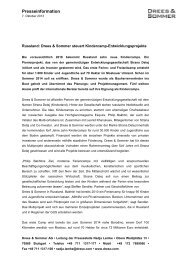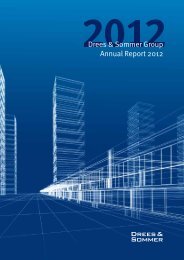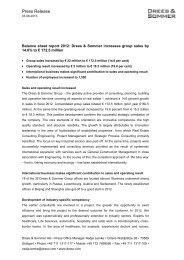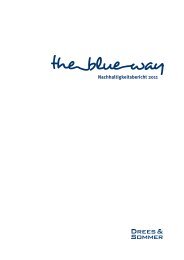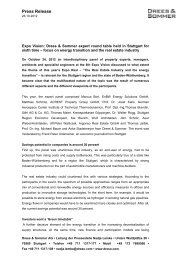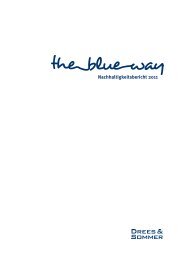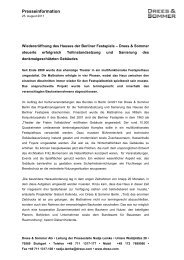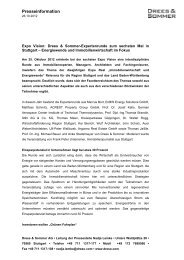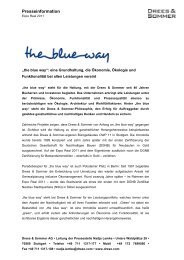32 - Drees & Sommer
32 - Drees & Sommer
32 - Drees & Sommer
Create successful ePaper yourself
Turn your PDF publications into a flip-book with our unique Google optimized e-Paper software.
PROJECT MANAGEMENT FOR OFFSHORE GRID CONNECTIONS<br />
Collection and safe transmission<br />
of offshore power<br />
Generating wind power on the open sea places the maximum demands on people, material<br />
and management. And the same challenges apply to low-loss transmission to consumers.<br />
Since 2010, as a member of a consortium, <strong>Drees</strong> & <strong>Sommer</strong> has been supporting the planning<br />
and realization of grid connections for wind farms in the North Sea.<br />
Legislators in Germany have recognized<br />
the potential of wind power, in particular<br />
of offshore wind farms. The German<br />
Federal Government’s energy concept<br />
provides for 35 percent of electricity<br />
consumption to be covered by renewable<br />
resources by 2020. Over the following<br />
decades, this share is to continue to rise,<br />
reaching 80 percent in 2050.<br />
Wind power will play a key role in the<br />
expansion of ‘renewables’ (see graphic<br />
on right). But there is only very limited<br />
space for wind farms on land and their<br />
profitability – even in elevated areas<br />
of the highlands or on the coast – is<br />
relatively limited. So what better than<br />
to go where wind and weather come<br />
together: on the open sea.<br />
Bringing the electricity of the future<br />
safely to the consumer<br />
Generating power off the coast is one<br />
thing. Getting it as safely as possibly to<br />
consumers on the mainland – and with<br />
minimum transmission loss – is quite<br />
another. The first challenge here is the<br />
transmission lines themselves, which<br />
are often up to 200 kilometers long and<br />
which, when transmitting alternating<br />
current, are not good conductors. For<br />
this reason, the current is converted into<br />
direct current on a floating converter<br />
platform. A relatively new technology<br />
called high-voltage direct current (HVDC)<br />
transmission then takes it from there to<br />
a transformer station on land, where it is<br />
converted back into three-phase current<br />
before being fed into the grid. This is a<br />
clear demonstration of how offshore wind<br />
power depends on a well-functioning<br />
infrastructure on land.<br />
12 13<br />
Gigawatt<br />
The potential for renewables is enormous, with offshore wind power, in particular, promising high growth rates<br />
Water power, total<br />
Jahr<br />
Land-based wind power Offshore wind power Bio mass, total Photovoltaics<br />
Source: SRU – Sachverständigenrat für Umweltfragen,<br />
„Wege zur 100 % erneuerbaren Stromversorgung“,<br />
Sondergutachten January 2011 (condensed version)



